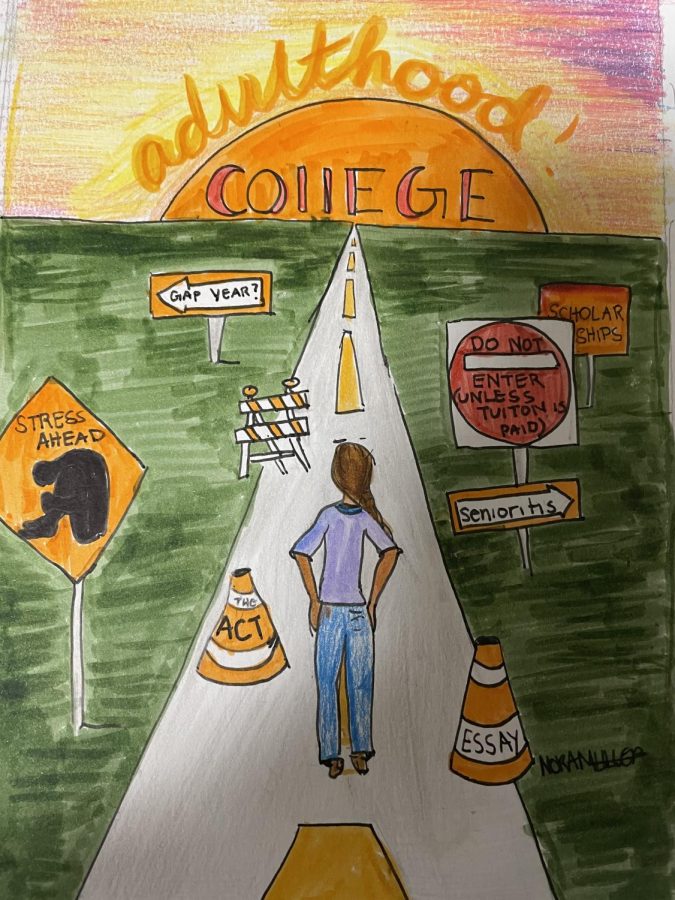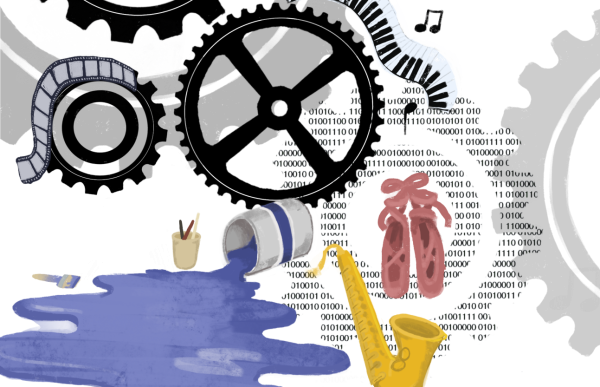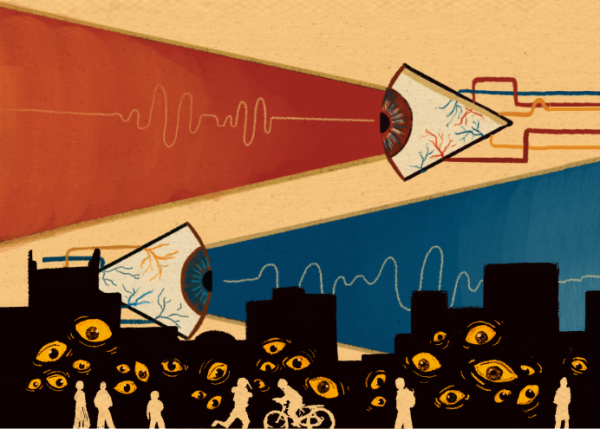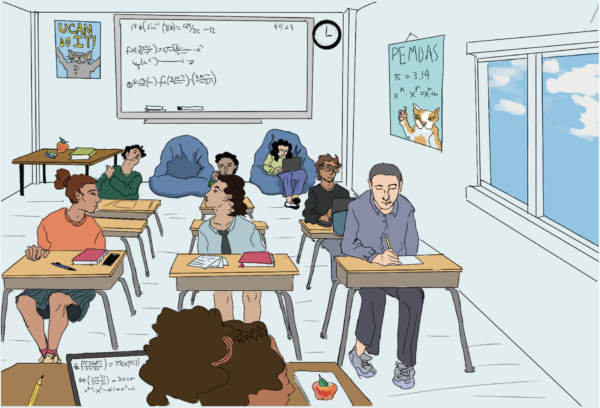ETHS aims to break college-or-bust culture, expand slate of post-secondary opportunities
From the moment freshmen take their first step through the wide, chocolate-colored doors on 1600 Dodge Ave., they press “start” on a four-year timer, counting down the days until they encounter their inevitable adulthood. As this timer nears its end, a daunting reality awaits students. After spending four years memorizing the distinct bells and navigating the different cuts and corners that compose ETHS, everyone is asked the same question: what’s next?
There are many post-secondary plans available to students, such as going to college, taking a gap year, entering the workforce, attending trade school and more. ETHS attempts to provide resources for all of these options through College and Career Services, but despite the efforts to present students with a variety of choices, a stigma at ETHS exists: that college is the best option.
“ETHS prides itself on being a pretty academic, highly ranked institution testing and where kids are going to college and stuff like that, and I think that’s been sort of institutional thinking for years,” College and Career Services Coordinator Beth Arey says.
Students have also noted that, in their experience at ETHS, college often felt like the only acceptable option.
“[ETHS] definitely mentioned trade school, [and other options for post-secondary plans], but 95 percent of the talk was college, and honestly, it’s looked down upon if you don’t end up going to college; it’s even looked down upon if you go to a community college, like Oakton,” senior Olu Logan says.
“Especially [in] Evanston, it’s a societal norm to go to college after high school,” senior Josie Hansen says.
As an educational institution, ETHS wants every student to strive for academic excellence. However, that does not mean college is the best or most logical plan for all students. There are many factors which contribute to students’ decision on what to do after ETHS.
“In many cases, it’s not just a personal preference but actually sometimes a family obligation to start bringing in some money, that’s having a solid career path with a living wage and a job, right where they’re just getting by, is the difference so that’s kind of the education piece that we’re putting out there more and more to help students on their path.” Arey adds, “We’re trying to shift the perception of college versus career to being college and career awareness and career opportunity. That’s really important to note that there are some really great jobs that people can get into with some short-term job training and skills that don’t require a four-year or even a two-year college degree.”
Students express having positive experiences working with College and Career Services to plan life after high school and felt like the counselors’ wanted to help find the right option for them.
“I didn’t feel left out, because I wasn’t going to college right away and everyone was helpful. There were also a lot of resources for students taking a gap year,” senior Ignacio Pavon says. “They set up a bunch of meetings to talk about my gap year and helped me figure out what I wanted to do. It actually was helpful, because I was a little lost at first.”
Students can find value in exploring alternative paths. Hansen also decided to take a gap year and has made plans to travel and develop skills outside of a traditional school setting.
“I’ve been wanting to take a gap year since freshman year of high school. Basically, one of my friends’ brothers did it, and it just looked super fun, and he learned a lot of things that weren’t necessarily something you could learn in a classroom, so I definitely wanted that experience.” Hansen adds, “Right now, my plan is to go on a trip with NOLS, which is the National Outdoor Leadership School, in the fall.”
Since the persisting culture at ETHS is that students should aim for college, opting for a gap year or other tracks can be a difficult decision for students to make.
“I definitely think people who don’t know people who have done [a gap year] are definitely more apprehensive to do it in the first place,” Hansen says. “It’s a scary thing, because all of your friends are going to college, and you’re just not.”
Arey acknowledges that students compare themselves to one another and judge each other depending on what they are doing after high school. This leads to the stigma of deciding not to go to college, even if students have plans they are excited about.
“There’s some misconception that it’s because you weren’t a good student or you can’t afford college, but sometimes it’s just the student’s choice; they have a preference for what they want to do,” Arey says.
“I don’t [think all high school students] should go to college. I think it [depends on] what your goals are in life, because college isn’t for everybody. Not everybody will succeed in that environment,” Logan expresses.
Additionally, while the College and Career Services offer resources and counseling support, students still encounter challenges developing their plans that are not considered “mainstream.”
“I did have a lot of resources, but sometimes I wish it was easier to do this whole gap year process. Sometimes, I felt like I didn’t get all the information I should have had, and maybe that was also my fault, but it wasn’t easy to access information on the school website; I had to research on my own,” Pavon says. “I wouldn’t say ETHS has a preference, but they definitely make it easier for the students who are taking the more traditional route.”
Furthermore, students at ETHS come from a variety of backgrounds which pose as additional factors to their post-secondary decision. Many students may not realize that what is accessible to them is not to everyone else. This lack of understanding adds to the existing division between students who are pursuing different plans.
“Students compare themselves to other students, and when we put gender and race into that within our institution, that is even magnified greater in terms of who’s doing what, and what is sort of acceptable and right,” Arey comments.
“With [certain] communities of color [having less access to education], not as many [community members] have gone to college, and not as many [community members] know the importance of college . . . It’s a big thing if you do go, but it’s not a big thing if you don’t go. In the white communities, where they [have greater access to education and] more resources, it’s a big thing if you don’t go, and it’s standard if you do go,” Logan says.
Ultimately, students say the efforts ETHS has made to be more inclusive when it comes to post-secondary opportunities are acknowledged and appreciated. However, there is a long way to go. Having a preference for college is ingrained within the culture at ETHS and will take a lot of work to undo the behaviors and stigma which have led to this perception.
“I think the school does a really good job of making it clear that there are other options if you don’t go to college. Every email that was ever sent out was like ‘whether you’re planning to go college or trade school or doing something else’—they’re very inclusive of that. I think there’s definitely a push, just from society, to go to a four-year institution, but the school makes it really accessible to find other options,” Hansen says.
Arey adds that much of the work her department does is to dismantle this culture at ETHS and provide comprehensive resources to all students.
“I do feel like within our community as a whole, not just the high school community but the Evanston community, there is a stigma about what you end up choosing as your path after high school,” Arey says.“There’s a lot of things that can come into play with forcing one path onto students or making the assumption that there’s one path to take. It’s been an uphill battle in trying to make this shift in the building.”
Your donation will support the student journalists of the Evanstonian. We are planning a big trip to the Journalism Educators Association conference in Nashville in November 2025, and any support will go towards making that trip a reality. Contributions will appear as a charge from SNOSite. Donations are NOT tax-deductible.
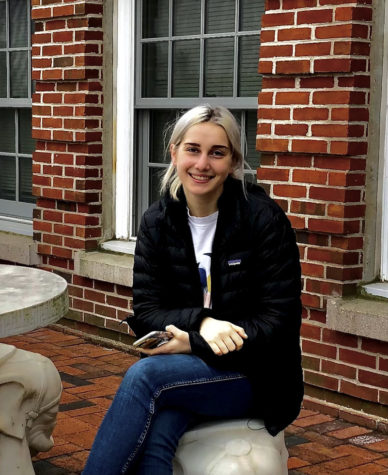

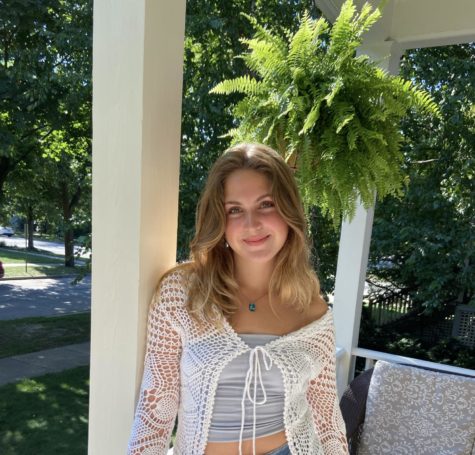

Hi! My name is Nora Miller. I'm a senior, and an Executive Editors for The Evanstonian, overseeing the Arts & Entertainment, Feature, and Photo & Art sections. In my four years on The Evanstonian staff, I have written, illustrated, and served as an Entertainment columnist and Arts & Entertainment editor. In my free time, I love taking walks in the forest preserve, drawing my friends and family, and cooking vegan meals. The Evanstonian energizes me because I'm able to share the stories of my classmates and citizens of the Evanston community.


